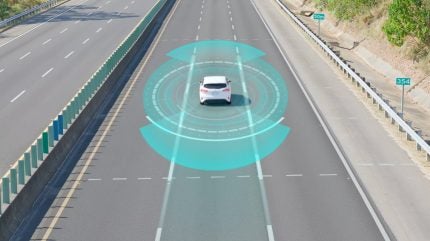
The makeup of insurance policies for autonomous vehicles will necessarily be “radically different” to today’s conventional policies, according to a new report.
GlobalData’s Autonomous Vehicles in Insurance report outlines that, where liability for collisions involving conventional vehicles almost always falls on a driver, this will not apply to vehicles that drive themselves.
Referencing the Society of Automotive Engineers’ six levels of autonomous driving, with 0 being no driving automation and 5 being fully driving automation, it explains: “From Level 4 onwards, liability will shift to the vehicle itself (as they will have no driver) so insurance products must change accordingly.”
As a result of this, the report posits that car insurance products are likely to become “more akin to product liability insurance than third-party liability insurance.”
It adds: “The most likely case for an incident involving an autonomous vehicle will be for the victim to claim against the owner’s insurance policy before the insurer then takes recourse against the at-fault party. This party could be the OEM (for design or monitoring defects), the IT service provider (for defective data provided to the vehicle), or the software vendor (for faults in the system coding).”
How well do you really know your competitors?
Access the most comprehensive Company Profiles on the market, powered by GlobalData. Save hours of research. Gain competitive edge.

Thank you!
Your download email will arrive shortly
Not ready to buy yet? Download a free sample
We are confident about the unique quality of our Company Profiles. However, we want you to make the most beneficial decision for your business, so we offer a free sample that you can download by submitting the below form
By GlobalDataAccording to Accenture and the Stevens Institute of Technology, such a change in the car insurance ecosystem will see gross written premiums – the total amount collected by insurers from customers – in the personal motor line fall by 40% by 2040 and the market for product liability increase by 14% over the same period.
Among the leading car insurance providers who have been actively engaging with autonomous driving technology and auto industries in the development and trials of autonomous vehicles, GlobalData cites Swiss Re, AXA, Munich Re, State Farm and Tokio Marine. It names Covea, Hiscox, Chubb, AIG and Uniqa as laggards in adoption.
The report notes that countries have had to update legislation to dictate how liability is to be determined in the age of autonomous vehicles when driver fault may no longer be the cause of an incident.
It adds that advanced driver assistance systems being added to vehicles are reducing the regularity of traffic collisions and the costs incurred on that front for insurers but that the cost of repairing vehicles as a result of the more sophisticated technology is raising the cost of repairs.
In addition, it adds that the rise of autonomous vehicles – which will be inherently connected to the internet – will bring with it cybersecurity challenges.
“It is estimated that 300 million lines of code are expected in a Level 5 autonomous vehicle, with 180,000 bugs predicted in the code, amounting to some 15,000 security vulnerabilities,” the report reads. “Hackers could compromise the ADAS in a vehicle in use or, worse, manipulate any autonomous functionality to directly cause a crash. Insurers must have a robust understanding of cyber risk in autonomous vehicles to effectively manage their risk portfolios.”







